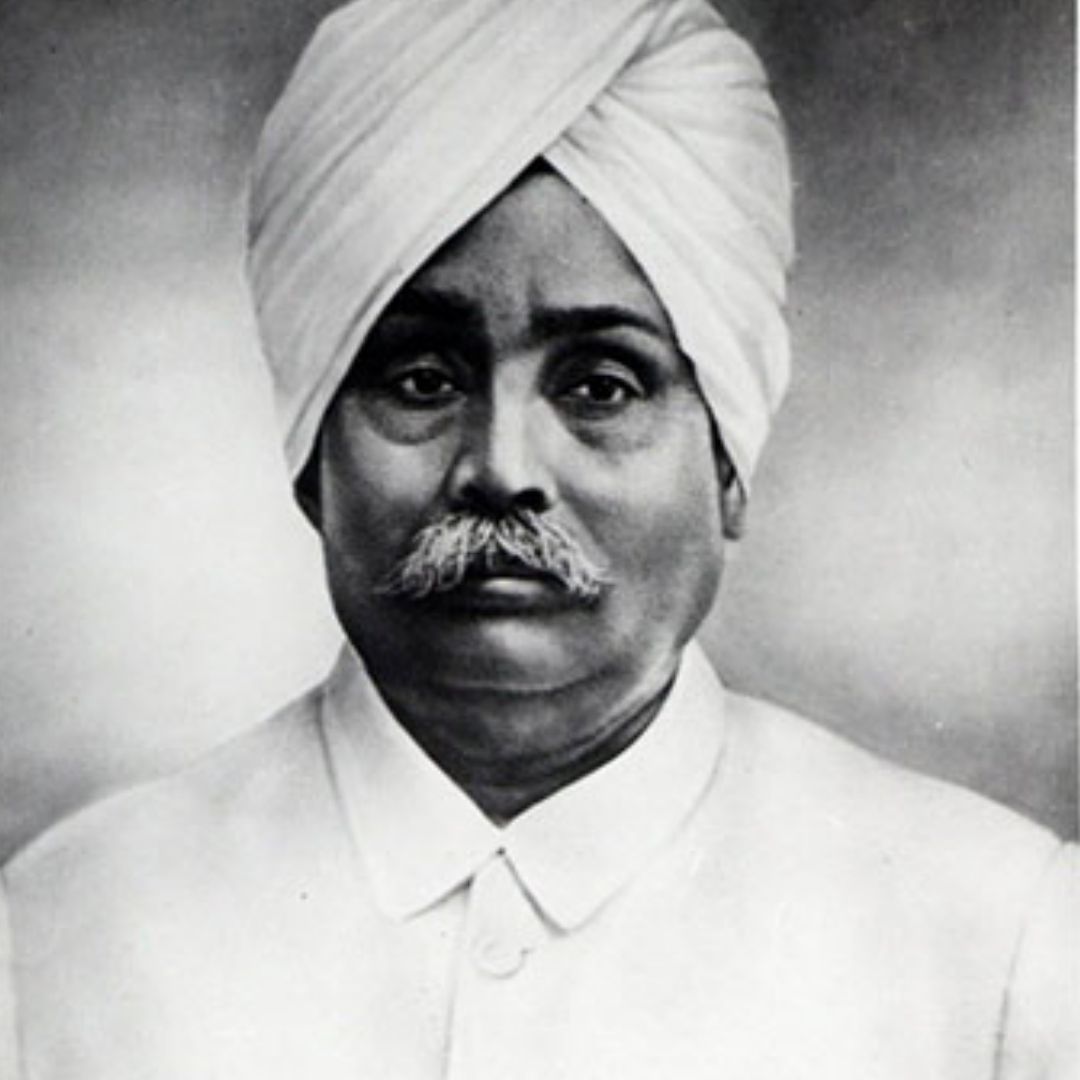
Image Credits: ANI
Lajpat Rai Jayanti: All You Need To Know About 'Punjab Kesari', Revolutionary Freedom Fighter
Writer: Tashafi Nazir
For most people, journalism sounds hectic and chaotic. For her, it's a passion she has been chasing for years. With an extensive media background, Tashafi believes in putting efforts on presenting a simple incident in the most interesting way.
India, 28 Jan 2022 7:46 AM GMT
Editor : Snehadri Sarkar |
While he is a massive sports fanatic, his interest also lies in mainstream news and nitpicking trending and less talked about everyday issues.
Creatives : Tashafi Nazir
For most people, journalism sounds hectic and chaotic. For her, it's a passion she has been chasing for years. With an extensive media background, Tashafi believes in putting efforts on presenting a simple incident in the most interesting way.
Lajpat Rai Jayanti is celebrated every year on January 28 to mark his birth anniversary. A revolutionary, author, politician and one of the three 'Lal Bal Pal' triumvirate, his ideology of nationalism and zealous patriotism earned him the title, 'Punjab Kesari' and 'Lion of Punjab’.
Lala Lajpat Rai was an Indian author, revolutionary, and politician, who played a significant role in the Independence movement. He was popularly known as Punjab Kesari.
Lajpat Rai Jayanti is celebrated every year on January 28 to mark his birth anniversary.
Born on January 28, 1865, at Dhudike in Punjab's Ludhiana district, Rai was the son of Urdu and Persian government school teacher Munshi Radha Krishna Agarwal and his wife Gulab Devi.
In the late 1870s, his father was transferred to Rewari, where Rai got his primary education in Government Higher Secondary School, Rewari, where his father was worked as an Urdu teacher. In 1880, Lajpat Rai got admission to Government College at Lahore to study law, where he met patriots and future freedom fighters, like Pandit Guru Dutt and Lala Hans Raj. He was influenced by the Hindu reformist movement of Swami Dayanand Saraswati, became a member of the existing Arya Samaj Lahore and founder-editor of Lahore-based Arya Gazette.
In 1884, his father got transferred to Rohtak and Rai came along after completing his studies. In 1886, he moved to Hisar and started to practise law and became a founding member of the Bar council of Hisar. In the same year, he founded the Hisar district branch of the Indian National Congress and reformist Arya Samaj. In 1888 and 1889, he had the honour of being one of the four delegates from Hisar to attend the annual session of the Congress at Allahabad, along with Babu Churamani, Lala Chhabil Das and Seth Gauri Shankar. In 1892, he shifted to Lahore to practice before the Lahore High Court. To shape India's political policy to gain independence, he also practised journalism and regularly contributed to several newspapers. In 1886, he assisted Mahatma Hansraj to establish the nationalistic Dayananda Anglo-Vedic School Lahore.
In 1914, he quit law practice to dedicate himself to the Indian independence movement and travelled to Britain and the US in 1917. In October 1917, he founded the Indian Home Rule League of America in New York and stayed in the US from 1917 to 1920. Arya Samaj and communal representation impacted his early freedom struggle.
Political Career
After joining the INC and participating in political agitation in Punjab, Lala Lajpat Rai was deported to Mandalay, but insufficient evidence held him for subversion. Rai's supporters tried to secure his election to the presidency of the party session at Surat in December 1907, but he failed.
Graduates of the National College, which he established inside the Bradlaugh Hall at Lahore as an alternative to British-style institutions, included Bhagat Singh. He was elected President of the INC in the Calcutta Special Session of 1920.
According to Wikipedia, He believed that the Hindu society needed to fight its own battle with the caste system, status of women and untouchability. Vedas were an essential part of Hindu religion, but the lower caste were not allowed to read them. Rai approved that the lower caste should read them and recite the mantras and believed that everyone should be allowed to read and learn from the Vedas.
During World War I, Rai lived in the US, but he returned to India in 1919 and led the special session of the Congress Party that launched the non-cooperation movement in the following year. He was imprisoned from 1921 to 1923 and elected to the legislative assembly on his release.
Simon Commission
In 1928, the UK set up the Simon Commision, headed by Sir John Simon to report on the political situation in India. Indian political parties boycotted the Commission because it did not include any members from the country, and was met with country-wide protests. When the Commission visited Lahore on October 30, 1928, Lajpat Rai led a non-violent protest against it and raised a slogan "Simon Go Back".
The police superintendent in Lahore, James A. Scott, ordered the police to lathi charge the protesters and personally assaulted Rai. Despite being critically injured, Rai subsequently addressed the crowd and said, "I declare that the blows struck at me today will be the last nails in the coffin of the British rule in India."
Rai did not fully recover from his injuries and passed away on November 17, 1928. Doctors thought that James Scott's blows was the main reason for his death. However, when the matter was raised in the British Parliament, their government refused any role in Rai's death. Bhagat Singh, the witness to the incident, swore to avenge the freedom fighter's death. He joined other revolutionaries like Shivaram Rajguru, Sukhdev Thapar and Chandra Shekhar Azad in a plot to kill Scott to send a message to the British government. However, in a case of mistaken identity, Singh was signalled to shoot on the appearance of an assistant superintendent of the Lahore Police, John P. Saunders. He was shot by Rajguru and Singh while leaving the District Police Headquarters in Lahore on December 17, 1928.
This case did not stop Singh and his fellow members of the Hindustan Socialist Republican Association from claiming that they had exacted retribution.
Lajpat Rai was a heavyweight veteran leader who inspired young men of his generation and kindled latent patriotism in their hearts with journalistic writings and lead-by-example activism.
Also Read: Remembering Charanjit Singh: All You Need To Know About India's Hockey Legend, Olympic Gold Medalist
 All section
All section














